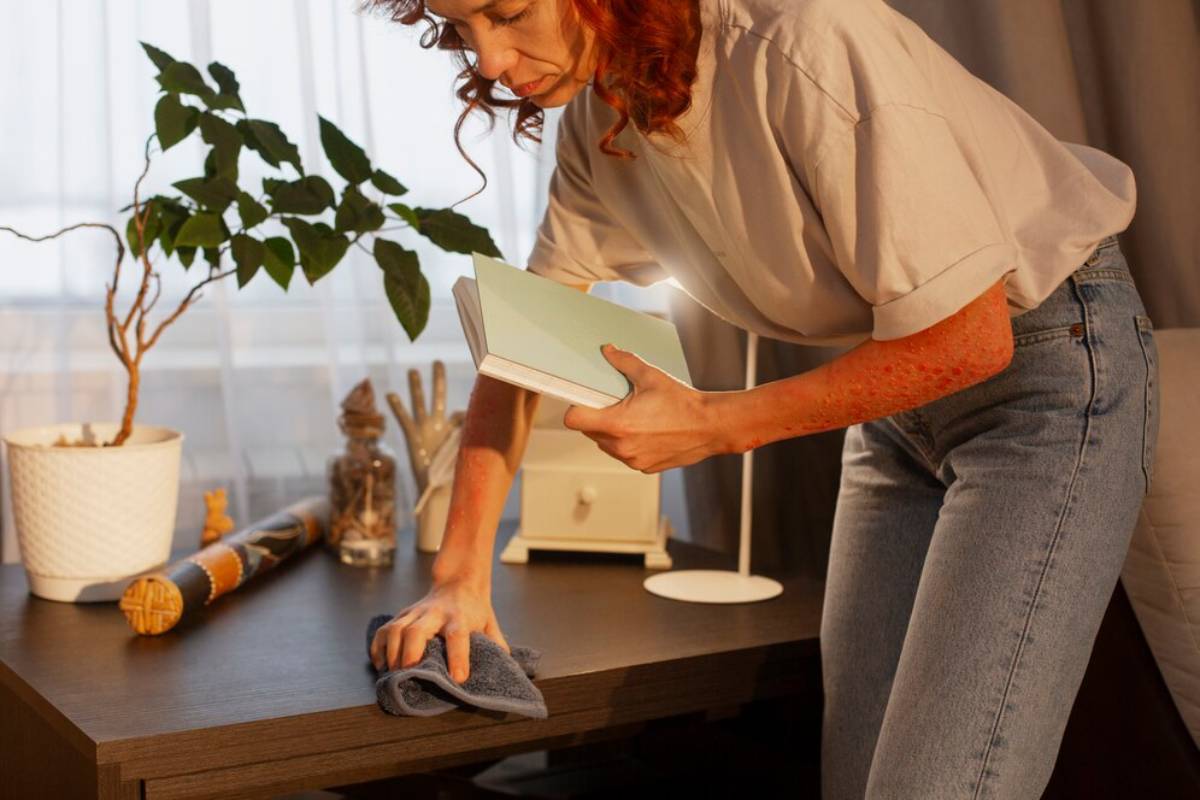
How to Create a Sustainable and Toxin-Free Home
Making a sustainable, toxin-free home is more than a trend. It’s a lifestyle choice that shows your commitment to being eco-friendly. In today’s world, caring for the environment matters more than ever. Making your home free from toxins is a responsibility we all share. This guide will share practical steps and expert tips to turn your home into a non-toxic sanctuary. It focuses on sustainability and health.
Understanding the Impact of Household Toxins
Many conventional household products contain chemicals that can negatively affect health. These toxins are often found in cleaning products, furniture, personal care items, and even building materials. Long-term exposure to these substances can contribute to respiratory issues, allergies, hormonal imbalances, and other health concerns. Being mindful of what we bring into our homes is essential for creating a non-toxic home.
Common Toxins Found in Homes
- Volatile Organic Compounds (VOCs): VOCs, which are found in paints, air fresheners, and cleaning products, can cause respiratory issues and headaches.
- Phthalates: These chemicals, which are present in plastics, synthetic fragrances, and personal care products, are linked to hormone disruption.
- Formaldehyde: Common in furniture, carpets, and adhesives, this toxin can irritate the skin, eyes, and respiratory system.
- Pesticides: Often found in household insecticides and non-organic produce, pesticides can affect neurological and reproductive health.
Importance of Eco-Friendly Living
Eco-friendly living is more than just a buzzword; it’s a necessary shift towards a more sustainable future. More people are aware of climate change and
environmental damage. They want to find ways to help the planet. Use sustainable practices every day. This helps cut waste, save resources, and create a healthier environment.
The Misconception of Complexity
Some think making a sustainable, toxin-free home is hard and expensive. This guide shows that anyone can begin this journey with smart changes and careful choices. You don’t need to spend too much time or money.
Key Benefits: Why It Matters
Healthier Living Environment

One of the primary benefits of a non-toxic home is the improvement of indoor air quality. Many household products have volatile organic compounds (VOCs) and harmful chemicals. These can lead to respiratory issues and other health problems. Removing these toxins creates a healthier living environment for you and your family.
Positive Environmental Impact
Living sustainably at home cuts your carbon footprint. It also eases the pressure on natural resources. Using eco-friendly products and practices helps protect ecosystems and cut down on pollution.
Financial Savings
Sustainable products might cost more at first, but they usually save money in the long run—energy-efficient appliances lower utility bills. Durable, non-toxic materials need replacing less often.
Real-Life Applications
The Smith family in Manchester chose to adopt a sustainable lifestyle.
They improved their health and saved over £500 a year by:
- Implementing energy-saving measures
- Switching to eco-friendly cleaning products
- Reducing plastic use
Creating a Sustainable and Non-Toxic Home
- Opt for natural and organic materials in bedding, upholstery, and flooring to reduce pollutants.
- Choose sustainable furniture made from solid wood or recycled materials.
- Use non-toxic paints and finishes to improve indoor air quality.
- Replace synthetic air fresheners with essential oil diffusers or natural alternatives.
Enhancing Indoor Air Quality Naturally
Improving indoor air quality is a key factor in maintaining a healthy living space. Pollutants from household products, furniture, and even outdoor air can accumulate indoors, affecting respiratory health and overall well-being.
- Increase Ventilation: Open windows daily to allow fresh air circulation and reduce indoor pollutants.
- Use Air-Purifying Plants: Incorporate plants like snake plants, peace lilies, and spider plants, which absorb toxins and enhance air quality.
- Install HEPA Filters: High-efficiency particulate air (HEPA) filters help remove dust, allergens, and airborne chemicals from indoor spaces.
- Avoid Synthetic Fragrances: Choose natural alternatives such as dried lavender, citrus peels, or baking soda for freshening indoor air.
Sustainable Living Through Responsible Consumption
- Reduce waste by switching to glass, stainless steel, or silicone containers.
- Minimise single-use plastics by using reusable shopping bags, straws, and bottles.
- Support sustainable brands that use recyclable and minimal packaging.
- Incorporate vintage or repurposed furniture for ethical home decor.
The Role of Energy and Water Conservation
- Install LED lighting and energy-efficient appliances to reduce power consumption.
- Use smart thermostats for efficient heating and cooling.
- Conserve water by fixing leaks and using low-flow faucets and showerheads.
- Invest in solar panels or renewable energy sources for a more sustainable home.
Conscious Personal Care Choices for a Healthier Home
- Choose organic and cruelty-free skincare and personal care products.
- Avoid items containing parabens, sulfates, and artificial fragrances.
- Opt for biodegradable and plastic-free packaging whenever possible.
- Use homemade alternatives like coconut oil for moisturising and baking soda for deodorising.
Important Consideration
- Transitioning to a sustainable lifestyle takes time and should be done gradually.
- Start with small changes like non-toxic cleaning products and reducing plastic use.
- Consistency is key—every effort contributes to a non-toxic home and a healthier planet.
Conclusion: Embracing a Healthier and Sustainable Lifestyle

Making a sustainable, toxin-free home starts with small, careful steps. Choosing eco-friendly living boosts your health and helps the planet. As you implement these changes, remember that every effort counts. Switching to non-toxic cleaning products or using renewable energy matters. Your actions count.
Start today by assessing your home environment and making one small change. Share your story. Inspire others to join the push for a sustainable future. Together, we can create a world where eco-friendly living is the norm, not the exception.
What small change can you make today to contribute to a sustainable and toxin-free home?


